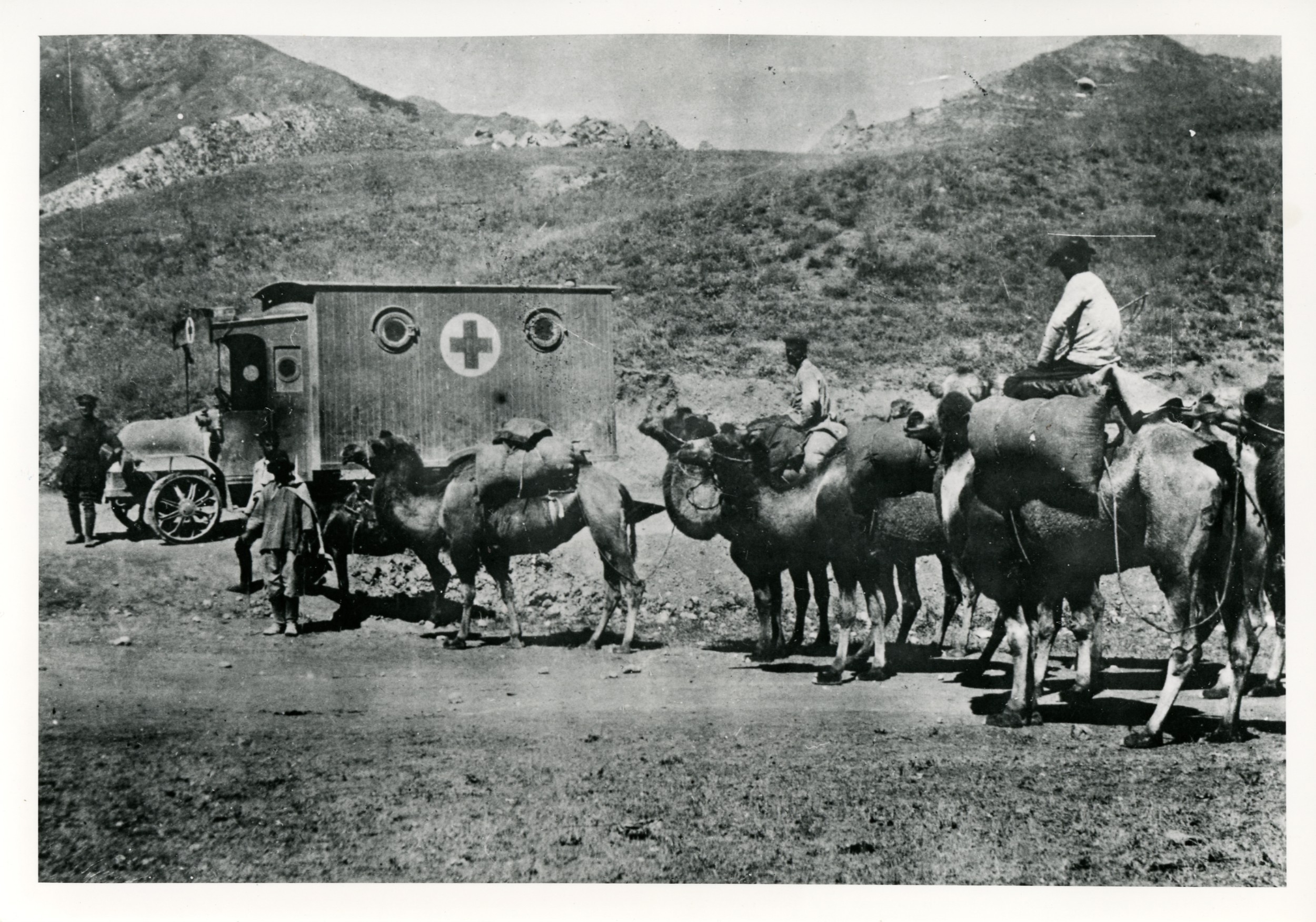
Avec le Commandant Locker
Description
Cette ambulance, côtoyant une caravane de chameaux en Arménie (1916), fait partie de la Royal Naval Armoured Car Division (RNACD) – une unité de l’armée anglaise à l’histoire un peu particulière. Sous l’autorité de Oliver Locker-Lampson, avec plus de 500 hommes, 45 voitures et 15 motocycles sont déployés dans le Caucase, la Roumanie et en Galicie. Ces unités sont directement placées sous commandement russe. Les membres de l’unité semblent avoir eu conscience du charactère exceptionnel de leur mission, et beaucoup d’entre eux ont extensivement documenté leur quotidien dans des journaux intimes. Il semblerait que cet arrangement peu conventionnel ait été déployé afin de renforcer les liens diplomatiques entre l’Angleterre et la Russie, dont cette première avait grandement besoin pendant la première guerre mondiale. Selon Locker-Lampson, l’unité devait prouver la valeur et la technique de l’armée anglaise aux Russes, afin de justifier la participation de la Russie à la guerre auprès de sa population.
D’autres collaborations poursuivant le même but avaient aussi lieu dans le domaine médical : les chirurgiens attachés à la RNACD furent instrumentaux dans le travail du ‘Scottish Women’s Hospital’ sur le front roumain. Le Chirurgien Lieutenant-Commandant King, l’un de ces chirurgiens, loue longuement le travail des Ecossaises dans ses lettres. Par ailleurs, en Galicie, il y a aussi un hôpital de la Croix-Rouge Russe, dirigé par deux chirurgienne anglaises avec lesquelles la RNACD collaborera.
Crédits
With Commander Locker, Document Imperial War Museum, Londres. Collection Musée international de la Croix-Rouge et du Croissant-Rouge, Genève
Tags
ImagesPhotographiesDans la même collection
Hôpital territorial de la Croix-Rouge “Vittorio Emanuele III”
Images, Photographies, Genre et diversité

Janet Ndoti pendant sa formation à l'hôpital King George V de Nairobi
Images, Expositions, Photographies, Genre et diversité
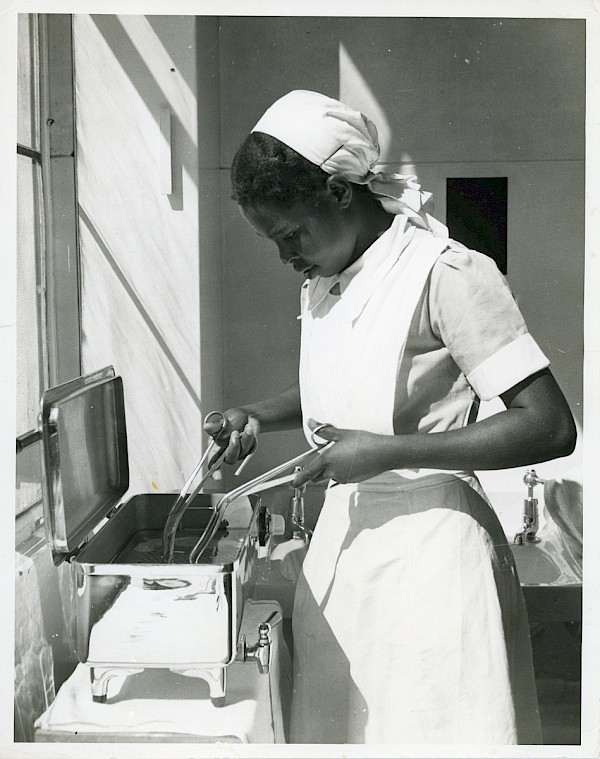
Une femme secouriste et deux hommes formés en sauvetage en mer
Images, Photographies, Genre et diversité
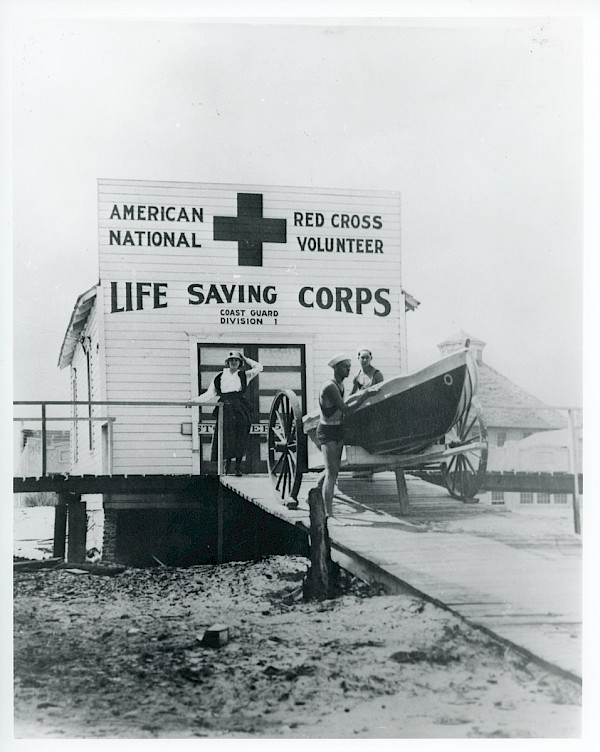
Un médecin militaire et une infirmière retirent un éclat de mine
Images, Photographies, Genre et diversité

L'aviation sanitaire et la défense passive
Images, Photographies
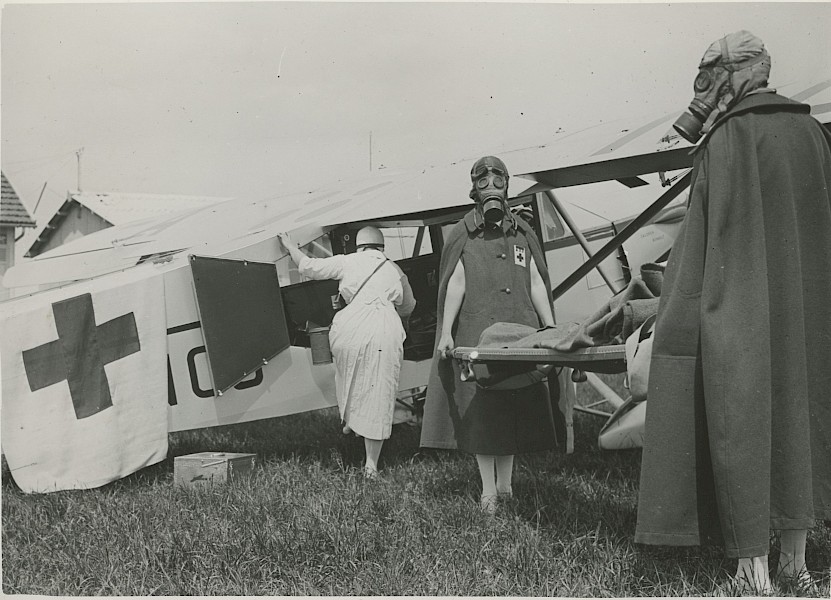
HUMANITY par Henry Leutwyler
Textes, Livres, Objets, Affiches, Photographies
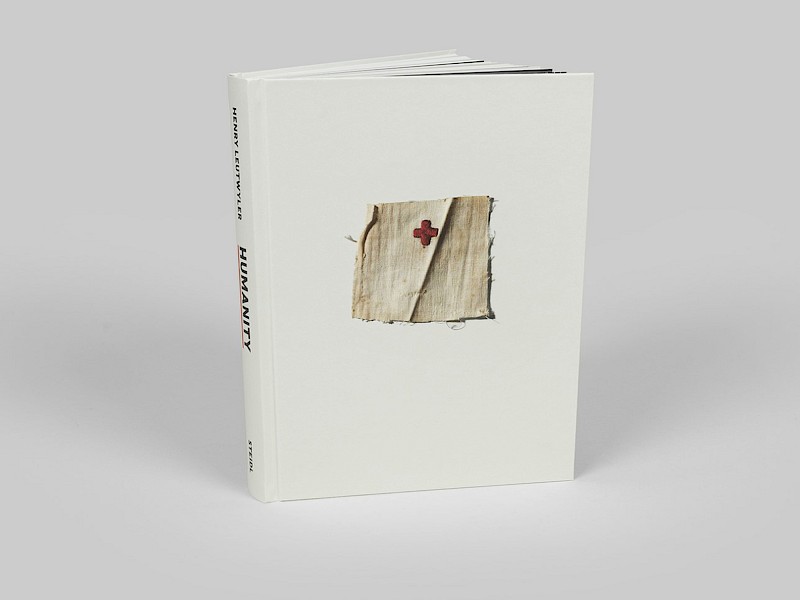

Avec le Commandant Locker
Description
Cette ambulance, côtoyant une caravane de chameaux en Arménie (1916), fait partie de la Royal Naval Armoured Car Division (RNACD) – une unité de l’armée anglaise à l’histoire un peu particulière. Sous l’autorité de Oliver Locker-Lampson, avec plus de 500 hommes, 45 voitures et 15 motocycles sont déployés dans le Caucase, la Roumanie et en Galicie. Ces unités sont directement placées sous commandement russe. Les membres de l’unité semblent avoir eu conscience du charactère exceptionnel de leur mission, et beaucoup d’entre eux ont extensivement documenté leur quotidien dans des journaux intimes. Il semblerait que cet arrangement peu conventionnel ait été déployé afin de renforcer les liens diplomatiques entre l’Angleterre et la Russie, dont cette première avait grandement besoin pendant la première guerre mondiale. Selon Locker-Lampson, l’unité devait prouver la valeur et la technique de l’armée anglaise aux Russes, afin de justifier la participation de la Russie à la guerre auprès de sa population.
D’autres collaborations poursuivant le même but avaient aussi lieu dans le domaine médical : les chirurgiens attachés à la RNACD furent instrumentaux dans le travail du ‘Scottish Women’s Hospital’ sur le front roumain. Le Chirurgien Lieutenant-Commandant King, l’un de ces chirurgiens, loue longuement le travail des Ecossaises dans ses lettres. Par ailleurs, en Galicie, il y a aussi un hôpital de la Croix-Rouge Russe, dirigé par deux chirurgienne anglaises avec lesquelles la RNACD collaborera.
Crédits
With Commander Locker, Document Imperial War Museum, Londres. Collection Musée international de la Croix-Rouge et du Croissant-Rouge, Genève
Tags
ImagesPhotographiesDans la même collection
Hôpital territorial de la Croix-Rouge “Vittorio Emanuele III”
Images, Photographies, Genre et diversité

Janet Ndoti pendant sa formation à l'hôpital King George V de Nairobi
Images, Expositions, Photographies, Genre et diversité

Une femme secouriste et deux hommes formés en sauvetage en mer
Images, Photographies, Genre et diversité

Un médecin militaire et une infirmière retirent un éclat de mine
Images, Photographies, Genre et diversité

L'aviation sanitaire et la défense passive
Images, Photographies

HUMANITY par Henry Leutwyler
Textes, Livres, Objets, Affiches, Photographies

Un monde à guérir aux Rencontres de la Photographie d’Arles
04.07.2022 au 25.09.2022
Exposition, Hors les murs
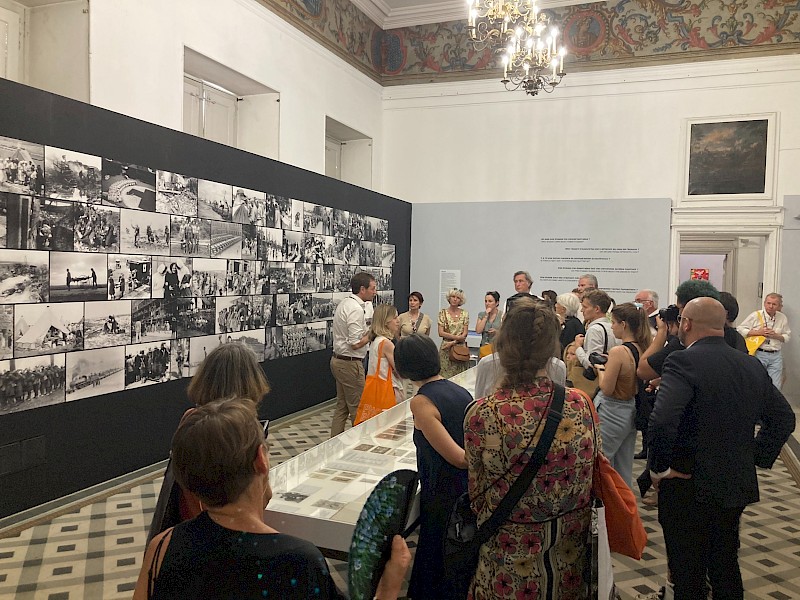
Un monde à guérir
16.11.2021 au 24.04.2022
Exposition, Au musée
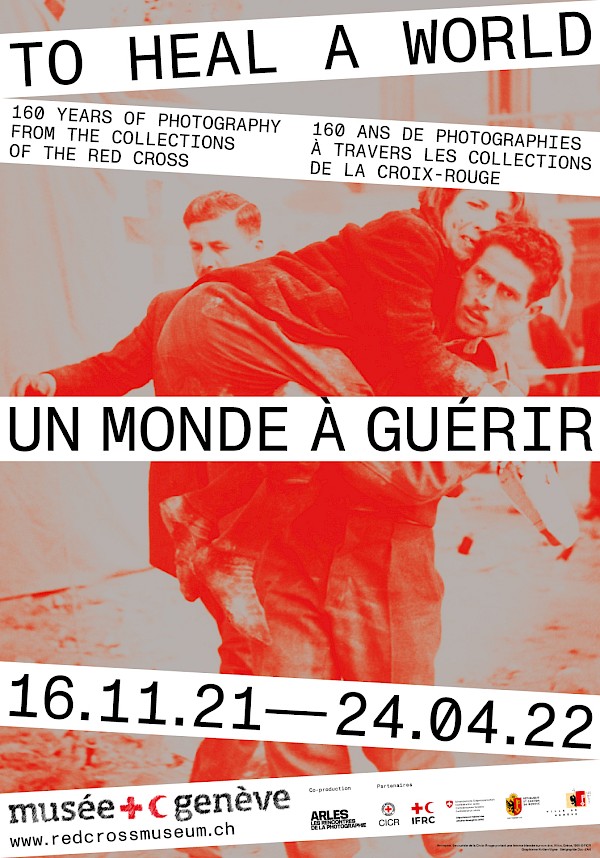
Un monde à guérir à Nantes
27.10.2023 au 02.01.2024
Exposition, Hors les murs
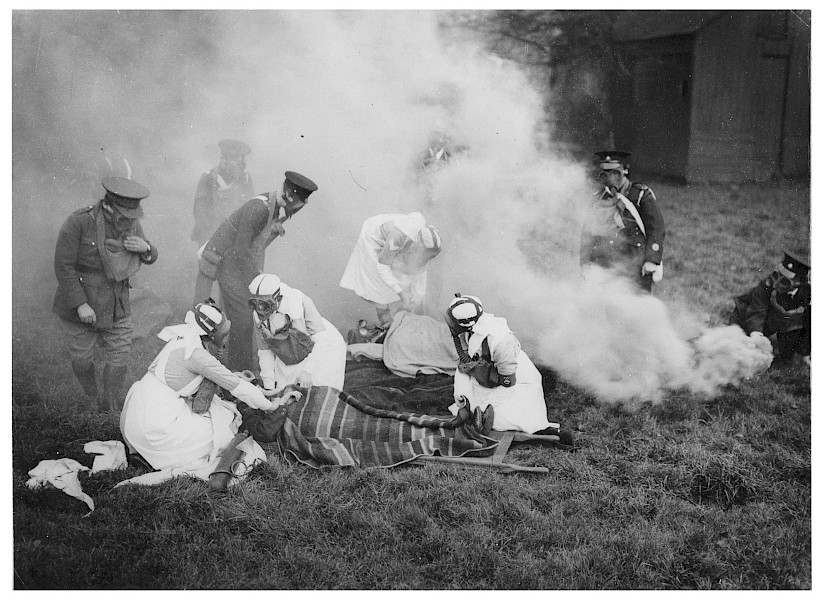
L'aviation sanitaire et la défense passive
Images, Photographies

Camp de réfugiés, lecture de messages de la Croix-Rouge
Images

Arrivée des secours du Don irlandais dans les dépôts de la Croix-Rouge bulgare
Images, Expositions
